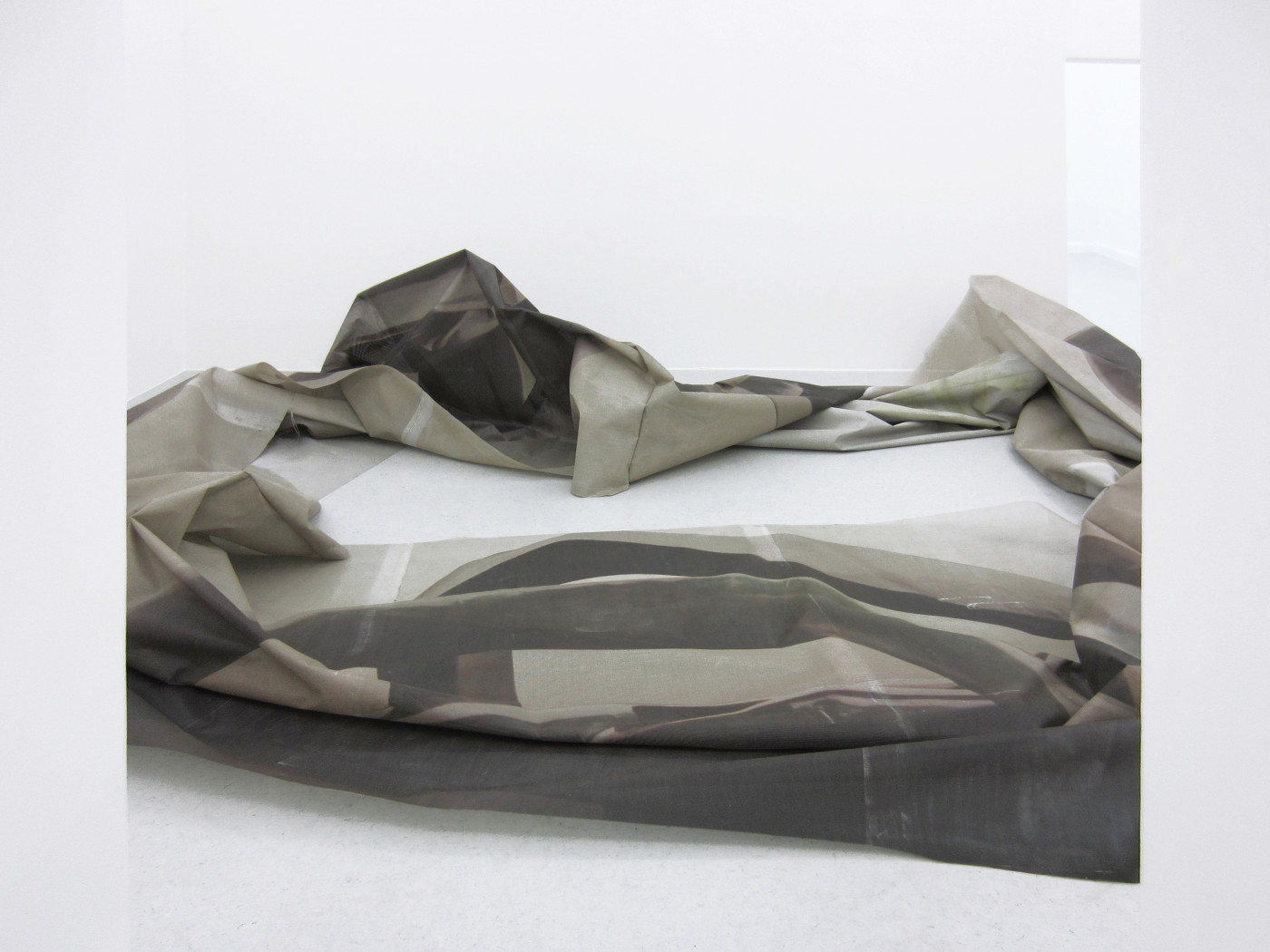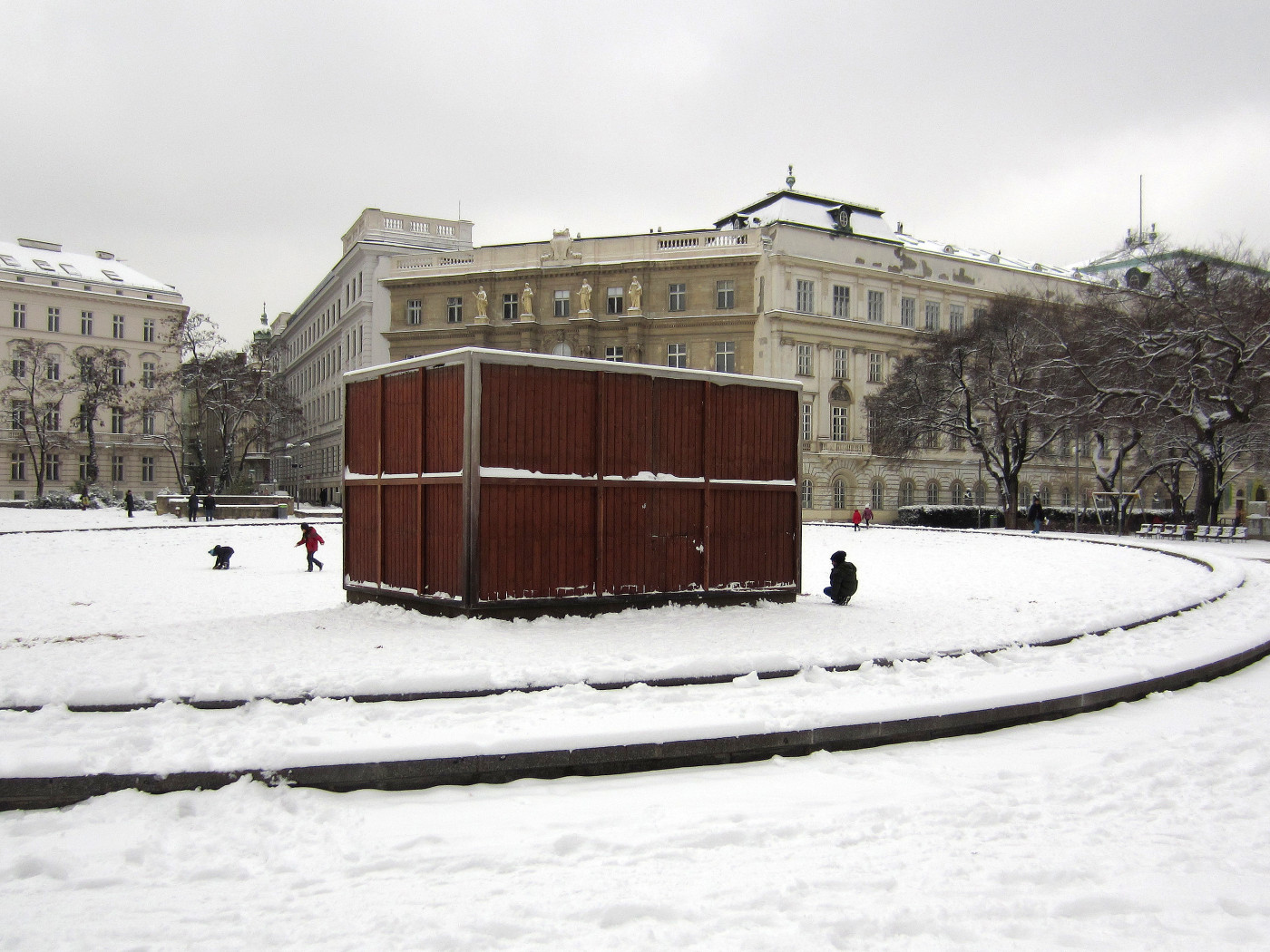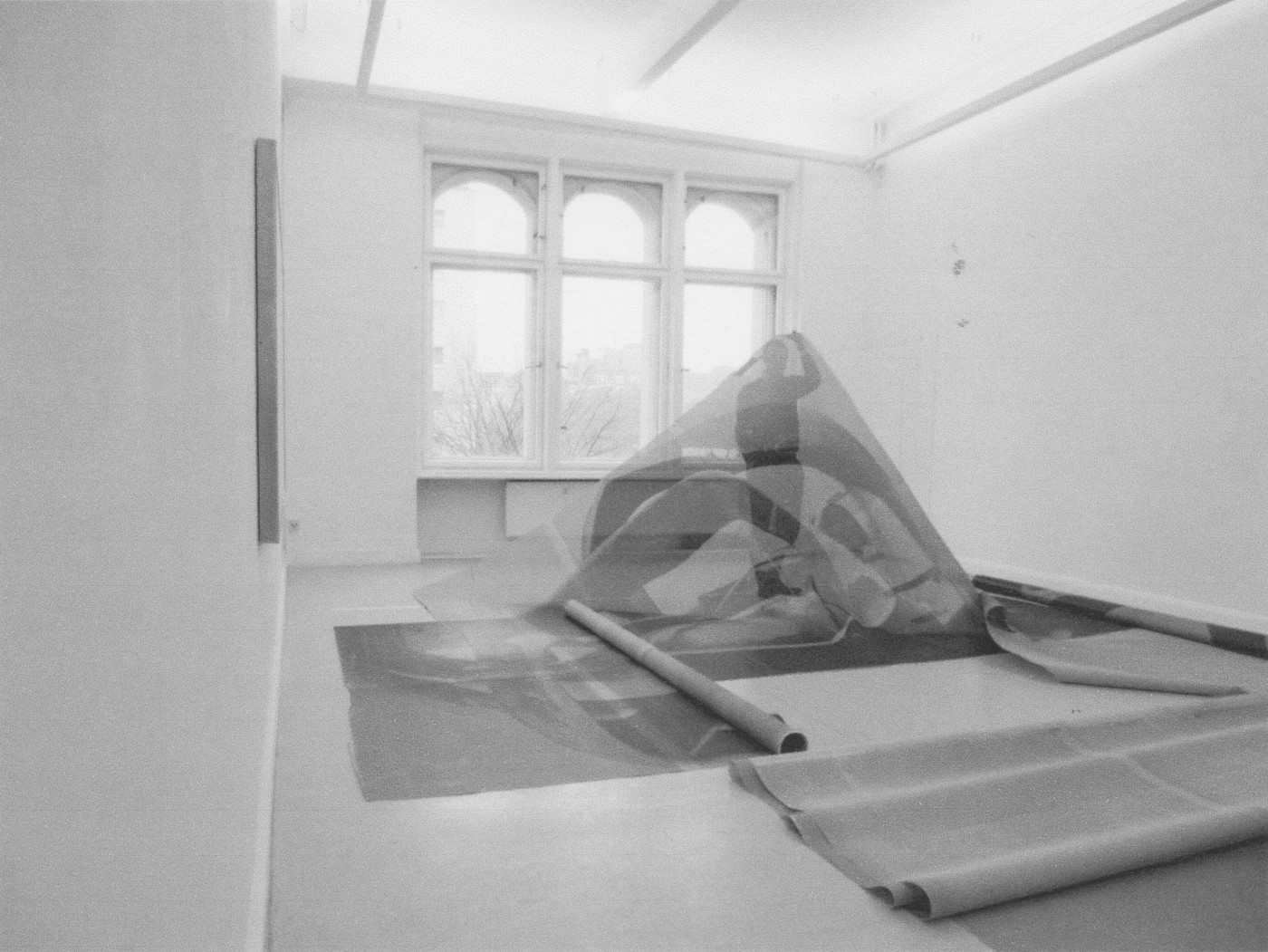Wie Tafelbilder, die ihre Form verloren haben, hängen in Reihen hintereinander zwei Gruppen von gewölbten und verdrehten Gummiformationen auf einer Art Gestell. Aus verzogenen geometrischen, schwarz-weißen Flächen zusammengesetzt, strahlen die einzelnen Formen (oder Antiformen) eine latent perverse Sinnlichkeit aus. Die nüchterne, fast pedantische Einfachheit des "klassischen" Formalismus wird durch den suggestiven Einsatz der Gummiflächen aufgebrochen. Wie in einem Lagerhaus oder einem Modehaus hängen die Arbeiten auf einer Schiene und bilden in ihrer Verdichtung ein Meta-Werk: "Hängung" von Geerten Verheus.
Zwischen Anti-Hommage und Hommage sind auch die Arbeiten von Vlado Martek angesiedelt. Die Ausstellung verdankt ihren Titel der Mitte der 70er Jahre in Zagreb gegründeten "Grupa šestorice" (Gruppe der Sechs) des Künstlers (neben Martek, Mladen Stilinović, Fedor Vučemilović, Boris Demur und Željko Jerman). Auf grob gezeichneten Landkarten ihrer jeweiligen Länder stehen die Namen berühmter Musiker, Dichter und anderer (jetzt) quasi-staatlich anerkannter Kreativer. Wo man Paris erwarten würde, hat Mallarmé seinen Platz gefunden. Polen wird von Chopin beherrscht. Kunst und Kontext stimmen überein. Wie so oft bei Martek sind Banalität und Bedeutung kaum voneinander zu trennen; ein Wirrwarr aus Hochkultur und Nonsens, das bisweilen auch als politisch verstanden werden kann.
"ATTRIBUTES OF MODIFICATION (Hill Arches)" ist eine Installation von Max Schaffer, die aus bedruckten großformatigen Planen besteht, die ein Werk von Henry Moore zeigen. Jeden Winter werden die "Hill Arches" am Karlsplatz in Wien für mehrere Monate eingerüstet und durch Bilder ersetzt, die vier Ansichten der monumentalen Bronze zeigen. In "A Group of Six Artists" werden die Ansichten ineinander verschachtelt und die Flächen in eine räumliche Konfiguration übersetzt, in der Rück- und Vorderseite, Innen- und Außenseite kaum noch voneinander zu unterscheiden sind; so wird die öffentliche Skulptur mit dem Galerieraum in Beziehung gesetzt.
Die konzentrierten Kreis- und Kreissegmentformen in den Bildern von Michael Dreyer zeugen deutlich vom handwerklichen Prozess ihrer Entstehung. "Fehler" werden in Kauf genommen und bisweilen bewusst produziert. Die perfekte Form des Kreises erhält einen handschriftlichen Charakter. Durch das Zusammenführen verschiedener offener wie geschlossener Kreise, die mit Hilfe eines Fadens oder eines Balkenzirkels gezogen werden, entstehen zwischen Mandala und Maßwerk, Form und Gestalt, Malerei, Mechanik und Handschrift pulsierende Konstellationen von zwingender Lebendigkeit.
Mit Channa Horwitz und Luis Camnitzer sind zwei wichtige Vertreter der frühen Konzeptkunst in "A Group of Six Artists" vertreten. Seit Anfang der 1960er Jahre stehen grafische Notenblätter und Notationen von Bewegungen und Klängen ("Sonakinatographien") im Zentrum von Horwitz' Arbeit. Auf dem Fundament einer logischen Ordnung wird die Zeit im Medium der Zeichnung fixiert und in grafische Rhythmen und serielle Strukturen übersetzt. Gleichermaßen streng und exakt entstehen bis heute in den Grenzen der selbst gesetzten Ordnung spielerische Kompositionen.
Die Installation "S.S. Atlantus" von Luis Camnitzer besteht aus drei Elementen: einem großformatigen Druck einer Postkarte mit dem Bild eines Schiffswracks, einem Betonblock, der auf dem Boden einer Wasserschale schwimmt, und einer Messingplatte, auf der in einfachen Worten Folgendes steht: “S.S. Atlantus. Remains of experimental concrete ship, one of twelve during World War I. Proved impractical after several transatlantic trips because of weight. Towed and sunk here as wharf in 1926.” Wie aus der Zeit gefallen, erzählt die "Atlantus" von Träumen der Vergangenheit, den Irrwegen der modernen Technik und der Hybris vor dem verheerenden Krieg. In Ufernähe, gar nicht so weit entfernt, schwimmt ein kleines Ruderboot, das dem müden Ungetüm melancholisch zuzuzwinkern scheint.


